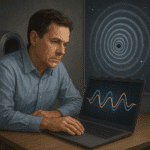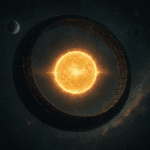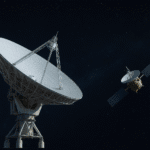Neutron star collisions have become a focal point in the study of gravitational waves, offering profound insights into the universe’s most enigmatic phenomena. These cosmic events, involving the merger of two neutron stars, have opened new avenues for understanding the fundamental forces of nature and the intricate dance of celestial bodies.
The Nature of Neutron Stars
Neutron stars are the remnants of massive stars that have undergone supernova explosions. These incredibly dense objects, with masses greater than that of the Sun but compressed into a sphere only about 20 kilometers in diameter, are primarily composed of neutrons. The extreme conditions within neutron stars make them fascinating laboratories for studying nuclear physics and the behavior of matter under intense pressure.
The gravitational pull of a neutron star is so strong that it significantly warps the space-time around it. This makes neutron stars excellent candidates for studying gravitational waves, ripples in the fabric of space-time predicted by Albert Einstein’s theory of general relativity. When two neutron stars orbit each other and eventually collide, they create powerful gravitational waves that can be detected by observatories on Earth.
Gravitational Waves: A New Window into the Universe
The detection of gravitational waves has revolutionized our understanding of the universe. These waves carry information about their origins and the nature of gravity itself, providing a new way to observe cosmic events that are otherwise invisible to traditional telescopes. The first direct detection of gravitational waves was made in 2015 by the Laser Interferometer Gravitational-Wave Observatory (LIGO), marking a milestone in astrophysics.
Neutron star collisions are particularly significant in the study of gravitational waves because they produce signals that are both strong and rich in information. When two neutron stars spiral towards each other and merge, they emit gravitational waves that can be detected across vast distances. These signals allow scientists to probe the properties of neutron stars, such as their masses and radii, and to test theories of gravity under extreme conditions.
Key Discoveries from Neutron Star Collisions
One of the most groundbreaking discoveries from neutron star collisions is the confirmation of the production of heavy elements, such as gold and platinum, during these events. When neutron stars merge, they create a kilonova, an astronomical event that results in the ejection of material rich in neutrons. This material undergoes rapid neutron capture, or the r-process, leading to the formation of heavy elements. This discovery has provided a solution to the long-standing mystery of the origin of these elements in the universe.
Another significant finding is the insight into the equation of state of neutron star matter. The equation of state describes how matter behaves at the extreme densities found in neutron stars. By analyzing the gravitational wave signals from neutron star collisions, scientists can infer the properties of the matter inside these stars, shedding light on the fundamental forces that govern their structure.
The Role of Multi-Messenger Astronomy
Neutron star collisions have also highlighted the importance of multi-messenger astronomy, which combines observations from different types of signals, such as gravitational waves, electromagnetic radiation, and neutrinos, to gain a comprehensive understanding of cosmic events. The first observed neutron star collision, GW170817, was detected not only through gravitational waves but also through a range of electromagnetic signals, including gamma-ray bursts and optical afterglows.
This multi-messenger approach has allowed scientists to study the aftermath of neutron star collisions in unprecedented detail. By combining data from different observatories, researchers can piece together a more complete picture of the processes involved in these events, from the initial merger to the formation of a black hole or a hypermassive neutron star.
Future Prospects and Challenges
The study of neutron star collisions and gravitational waves is still in its infancy, with many exciting discoveries yet to come. As gravitational wave detectors become more sensitive and new observatories come online, the number of detected neutron star collisions is expected to increase, providing a wealth of data for scientists to analyze.
However, there are also challenges to overcome. The interpretation of gravitational wave signals requires sophisticated models and simulations, and the precise nature of neutron star matter remains an open question. Additionally, the detection of electromagnetic counterparts to gravitational wave events is not always guaranteed, requiring coordinated efforts from observatories around the world.
Despite these challenges, the study of neutron star collisions and gravitational waves holds great promise for advancing our understanding of the universe. These cosmic events offer a unique opportunity to explore the fundamental laws of physics and to uncover the mysteries of the most extreme environments in the cosmos.










